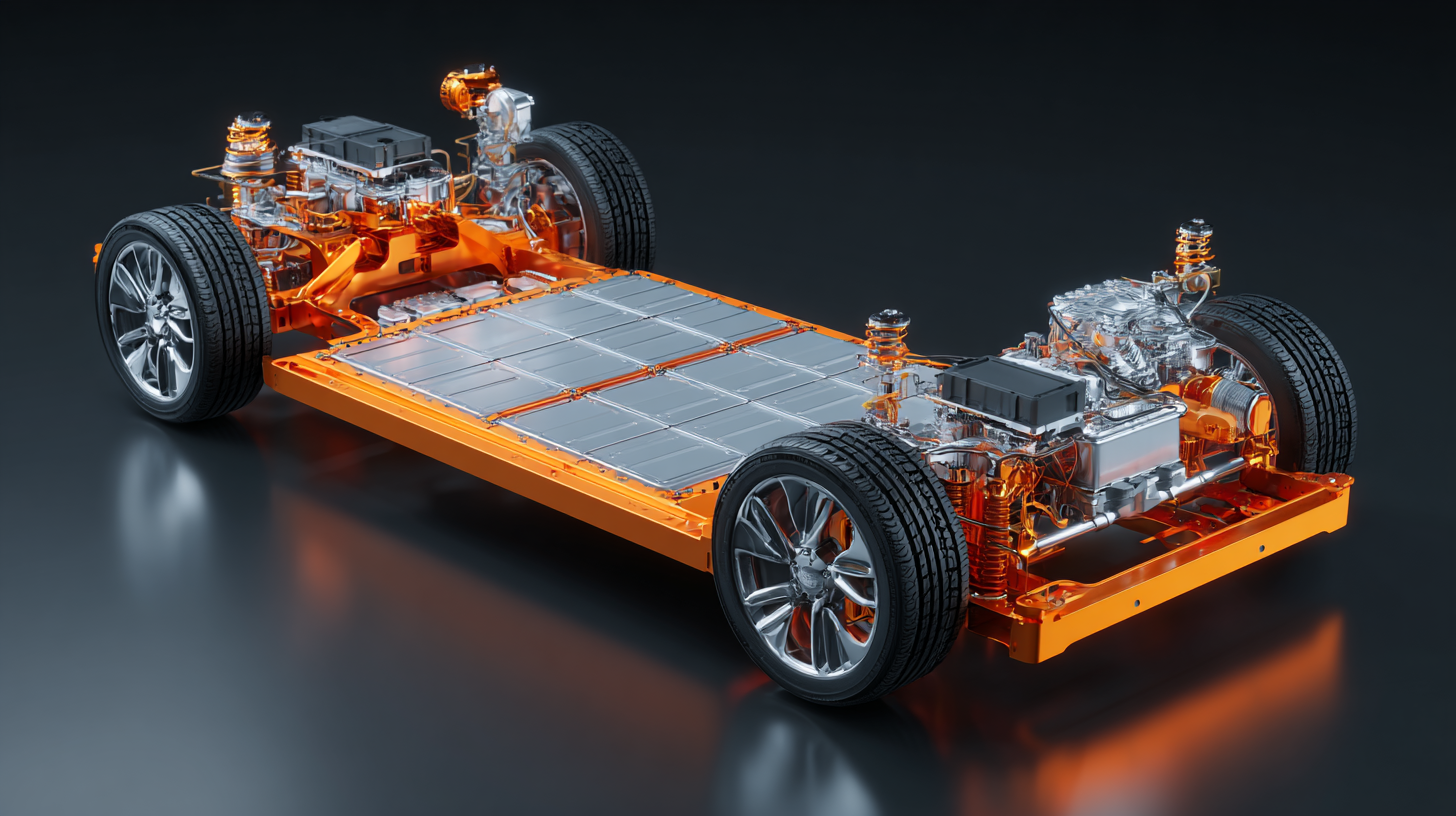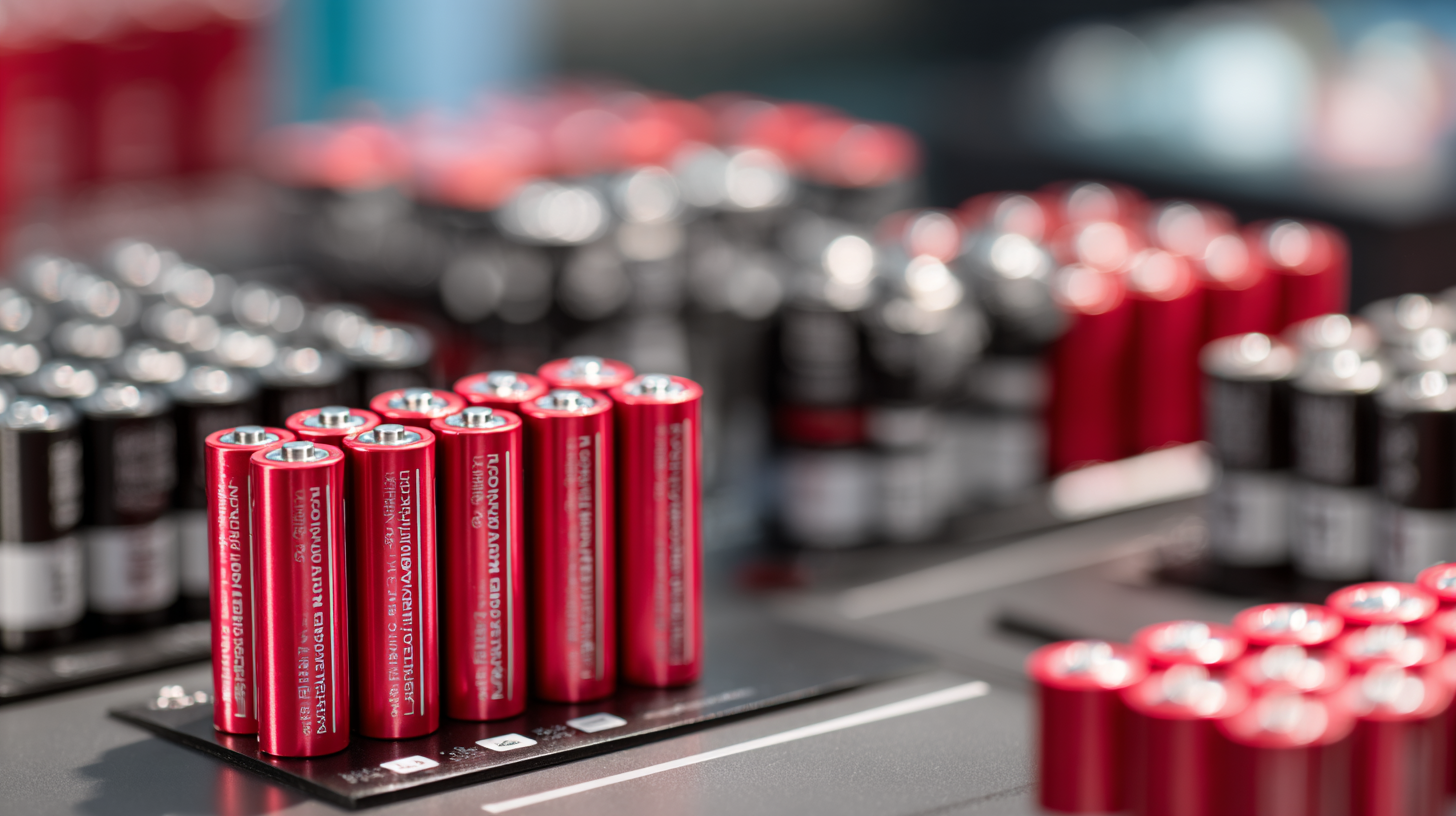Exploring the Future of Energy Storage with the Best Lithium Polymer Battery Technology
As the demand for efficient energy storage solutions continues to rise, the spotlight is increasingly on Lithium Polymer Battery technology, which is poised to revolutionize the energy landscape. According to a report by Fortune Business Insights, the global lithium-ion battery market is projected to reach $129 billion by 2027, with a significant portion attributed to the advancements in lithium polymer technology. This type of battery offers distinct advantages such as lightweight design, flexibility in form factor, and enhanced safety features, making it an attractive option for various applications from consumer electronics to electric vehicles. In this blog, we will explore the future of energy storage, delving into the best practices and innovations surrounding Lithium Polymer Batteries, thereby providing insights into how they could shape a more sustainable energy future.

Understanding Lithium Polymer Batteries: Key Features and Advantages
Lithium polymer batteries (LiPo) are gaining significant traction in the energy storage sector due to their unique characteristics and advantages over traditional battery technologies. One of the key features of LiPo batteries is their lightweight and flexible design, which allows them to be molded into various shapes. This versatility is crucial for applications ranging from consumer electronics to electric vehicles (EVs) and renewable energy systems. According to a recent report by MarketsandMarkets, the global lithium polymer battery market is expected to grow from USD 13.1 billion in 2020 to USD 24.6 billion by 2026, reflecting the increasing demand for efficient energy storage solutions.

Another major advantage of lithium polymer batteries is their higher energy density compared to the conventional lithium-ion batteries, which enables longer runtimes and reduced weight in applications. The average energy density of LiPo batteries is typically around 150-200 Wh/kg, while some advanced variants can reach up to 250 Wh/kg. This enhanced energy capacity makes them particularly attractive for electric vehicles, reducing the need for frequent recharging. Furthermore, LiPo batteries can be discharged at a higher rate without significant degradation, providing substantial benefits in high-performance scenarios such as racing drones and electric sports cars. The combination of these attributes positions lithium polymer technology as a formidable player in the future of energy storage.
Comparing Energy Density and Lifespan: What Makes Polymer Batteries Stand Out?
When delving into the realm of energy storage technologies, the energy density and lifespan of polymer batteries make them a particularly compelling choice. Polymer batteries typically exhibit superior energy density compared to traditional lithium-ion batteries, often achieving energy densities of up to 300 Wh/kg. This increased capacity enables devices to operate longer between charges, which is crucial for applications in electric vehicles and portable electronics.
Moreover, lifespan is a critical factor where polymer batteries excel. Many lithium-ion systems face capacity degradation over time, often losing 20% of their capacity within the first few years. In contrast, polymer batteries have been shown to maintain a significantly higher percentage of their original capacity even after extensive cycles, thanks in part to their stable electrolytes and solid-state structures. According to recent studies, polymer batteries can deliver reliable performance for up to 2000 cycles with minimal degradation, making them an attractive option for sustainable energy applications.
Tips: To maximize the lifespan of your battery systems, ensure they are operated within optimal temperature ranges and avoid deep discharges. Additionally, consider integrating advanced battery management systems to monitor performance and mitigate risks associated with thermal management.
Innovations in Lithium Polymer Technology: Industry Trends to Watch
In recent years, lithium polymer battery technology has emerged as a pivotal player in the energy storage landscape. Innovations in this field are driving a surge of interest from various industries, including electric vehicles, consumer electronics, and renewable energy systems. One of the most noteworthy trends is the development of more efficient and lightweight battery designs, which enhance energy density and reduce overall weight. This advancement not only extends the operational range of electric vehicles but also improves the portability of devices like smartphones and laptops.
Moreover, safety and longevity are becoming top priorities in lithium polymer technology. Manufacturers are focused on creating batteries that are less prone to swelling and other risks associated with thermal runaway. Enhanced electrolyte formulations and advanced packaging techniques are being explored to address these concerns, fostering reliability in performance under varying conditions. As these innovations continue to unfold, we can expect lithium polymer batteries to play an increasingly vital role in global energy storage solutions, paving the way for a more sustainable future.
Cost Analysis of Lithium Polymer Batteries vs. Traditional Energy Storage Solutions
The cost analysis of lithium polymer batteries compared to traditional energy storage solutions reveals significant insights into their economic viability. According to a report by the International Energy Agency (IEA), lithium polymer batteries have seen a remarkable decrease in costs, dropping from over $1,000 per kilowatt-hour (kWh) in 2010 to around $137 per kWh in 2020. This trend is expected to continue, making them more affordable than traditional lead-acid and nickel-cadmium batteries, which average between $200 to $300 per kWh.
Furthermore, a study by Bloomberg New Energy Finance (BNEF) forecasts that by 2025, the cost of lithium-ion batteries, the category that includes lithium polymer technology, will decline to approximately $100 per kWh. This decline not only enhances the attractiveness of lithium polymer batteries in consumer electronics and electric vehicles but also positions them as a competitive alternative for grid storage solutions. The efficacy in energy density—ranging from 150 Wh/kg to over 200 Wh/kg—coupled with lower maintenance costs compared to traditional methods, showcases lithium polymer batteries as the energy storage solution of the future, capable of meeting the increasing demands for sustainable and efficient energy systems.

Future Applications: How Lithium Polymer Batteries are Revolutionizing Energy Storage Systems
The rapid advancement of lithium polymer battery technology is set to revolutionize energy storage systems across various applications. As industries transition towards more sustainable and efficient energy solutions, lithium polymer batteries stand out due to their lightweight design, high energy density, and ability to be molded into various shapes. This adaptability opens new avenues in sectors like renewable energy, electric vehicles, and consumer electronics, where maximizing storage capacity while minimizing weight is crucial.
Moreover, the future applications of lithium polymer batteries extend beyond conventional uses. In the realm of renewable energy, these batteries can facilitate a more efficient integration of solar and wind power by storing surplus energy generated during peak production times. This capability ensures a steady power supply, even during low-generation periods. Additionally, advancements in battery management systems will enhance the longevity and safety of these batteries, making them an ideal choice for both residential and commercial applications. As we explore these exciting developments, lithium polymer technology promises to play a pivotal role in shaping the future of energy storage.
